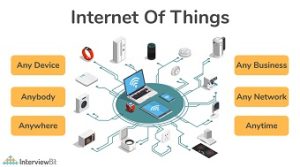
There is no denying that the COVID-19 pandemic has radically changed the way we work. In May 2021, 31% of the country’s workforce was still working remotely, with 71% of businesses in professional, scientific, and technical industries remote-working.
Although the conversation often focuses on office workers, the COVID-19 pandemic has impacted the way many other, non-office sectors operate. In the security industry, since the introduction of lockdowns and social distancing guidelines, the way businesses monitor sites has changed.
While in the past, security guards would have patrolled the premises, companies are increasingly opting to use high bandwidth security, deploying CCTV to monitor sites – rather than people. At OV, we believe the only way to ensure CCTV is as trustworthy as a person, is to use a multi-network SIM in the device, ensuring connectivity 24 hours a day – every day.
Switching to CCTV doesn’t simply mean installing a camera on a wall. To ensure your site is monitored 24-hours a day, with real-time footage available to your staff, reliable video surveillance means deploying CCTV cameras with the Internet of Things (IoT).
Smart surveillance not only reduces the need for a security officer on site, but also minimises the reliance on a member of staff continuously monitoring the CCTV footage. Instead, cameras connect to a centrally managed system, so if an emergency happens, it notifies the system.
It then sends an instant alert to a designated person or the emergency services. This streamlines the typical monitoring process, removing possibilities of human errors and computer lags, increasing efficiency. And, equally as important, since the COVID-19 pandemic, it removes the reliance on in-person surveillance.
However, the role of a security guard is not always just to monitor and prevent crime. When stationed at a block of offices or flats, an officer often also monitors the premises, ensuring that everything is running smoothly, for example, checking for faults in entry systems and lifts.
Though this technically sits with the maintenance team, losing a security guard in place of CCTV could risk losing another pair of eyes on the ground. This risk can be averted, if businesses also deploy IoT sensors across the site, connected to the same centrally managed system as the CCTV.
Sensors installed into lifts and door entry systems work in a similar way, sending data collected on the object in real time. If an error with the system arises, an instant alert will be sent, and maintenance can be scheduled immediately.
Although smart solutions are on the rise, for some businesses, in-person security is still the best or the preferred option. Pre-pandemic, there may typically have been multiple security staff on-site, but to accommodate for social distancing guidelines and fewer people on the premise generally, security guards have increasingly worked solo.
Lone working, especially for security personnel, comes with its risks. When faced with emergencies, such as burglaries or violence, the risk of working alone is immediately heightened. To keep lone workers safe, businesses can provide staff with wearable IoT devices.
The wearable IoT devices have an emergency button and voice access installed, so in the case of an urgent situation, the wearer can discreetly press the button, and it will immediately alert the monitoring station, who will be able to hear what is happening at the incident location.
Furthermore, wearable IoT devices can also monitor key health markers and regular movement, so if a worker either stops moving for a prolonged time, or their health markers suddenly change, an alert will immediately be sent to a pre-agreed contact, or the emergency services, to send out help instantly.
While this technology can protect businesses and staff, it can also help to remove instances of human errors, when inaccuracies can still occur. Ultimately, we’re handing the baton of trust over from person to tech. So, if smart technology is to perform as we expect it to, it must be connected to a reliable network.
Connectivity is the key to the seamless operation of IoT, because without it, devices cannot work and losing connection for the security industry is not an option. A business needs to trust that security equipment will do its job, after all, the safety of their site and staff is in the ‘hands’ of it.
To confidently trust in IoT, a multi-network SIM is the safest option. Using a single network means that if that provider experiences issues or outages, so will the equipment. Whereas, with a multi-network provider, if one network drops, it will simply switch to another in the area, in order to ensure reliable security 24 hours a day.
Not only are multi-network SIMs the safest option for ensuring connectivity, but they are also invaluable, as the security industry assesses the short-term future of mobile connectivity. Whether it is the closing down of 2G and 3G networks, or the availability of new technologies, such as LTE-M or 5G, opting for a multi-network SIM is the best option available.
Whatever the plans are of the individual networks, a multi-network SIM ensures that you can access older services, such as 2G and 3G, as long as any network continues to supply service, and get the newer technologies, such as LTE-M and 5G, as soon as the first network makes them available.
Ultimately, smart security solutions are only as trustworthy as the network they are connected to. As businesses roll out new technologies that rely on connectivity 24 hours a day to perform their job, multi-network providers should be the only option considered and utilised. With a multi-network SIM in a CCTV device, businesses can be confident that their site is monitored and secure, every hour of every day.
Credits: OV (OVConnects)












